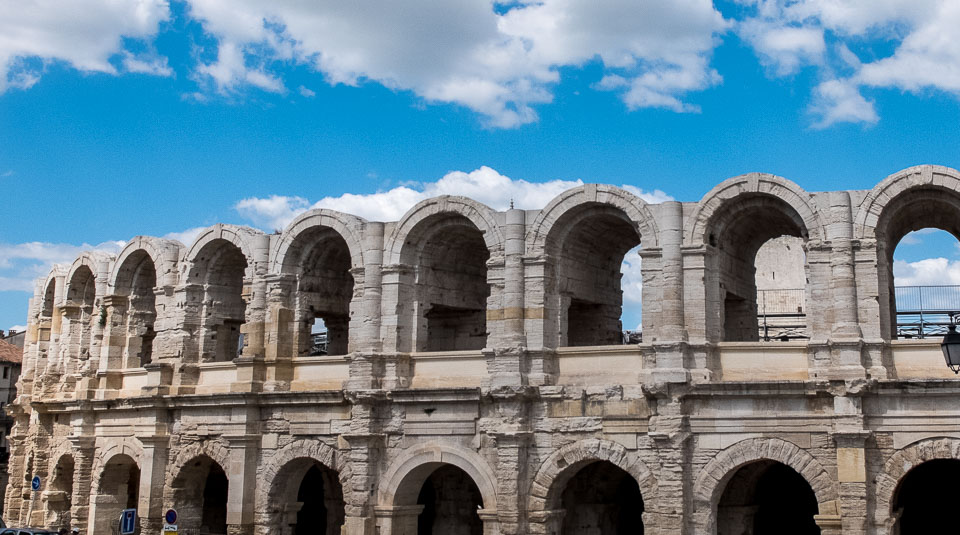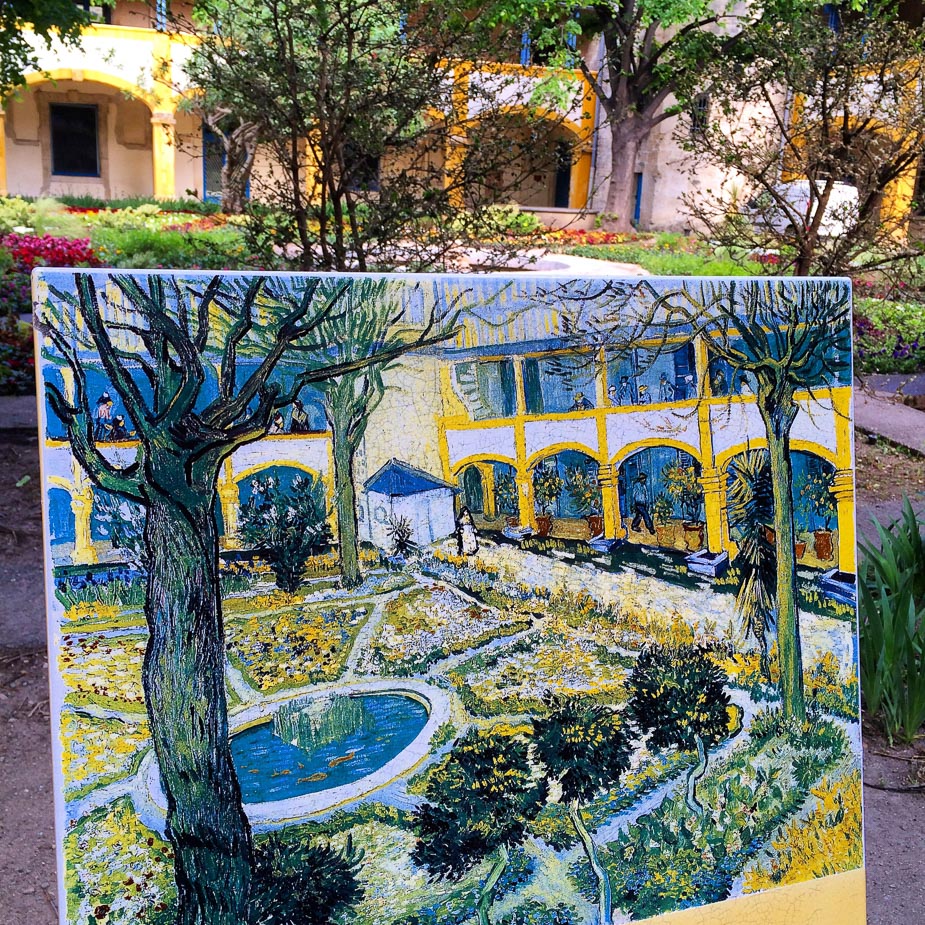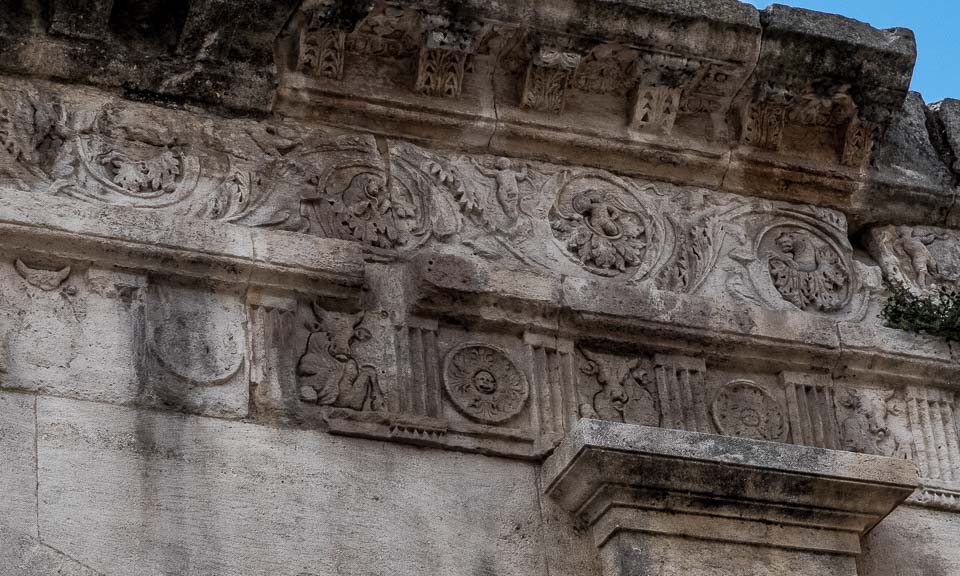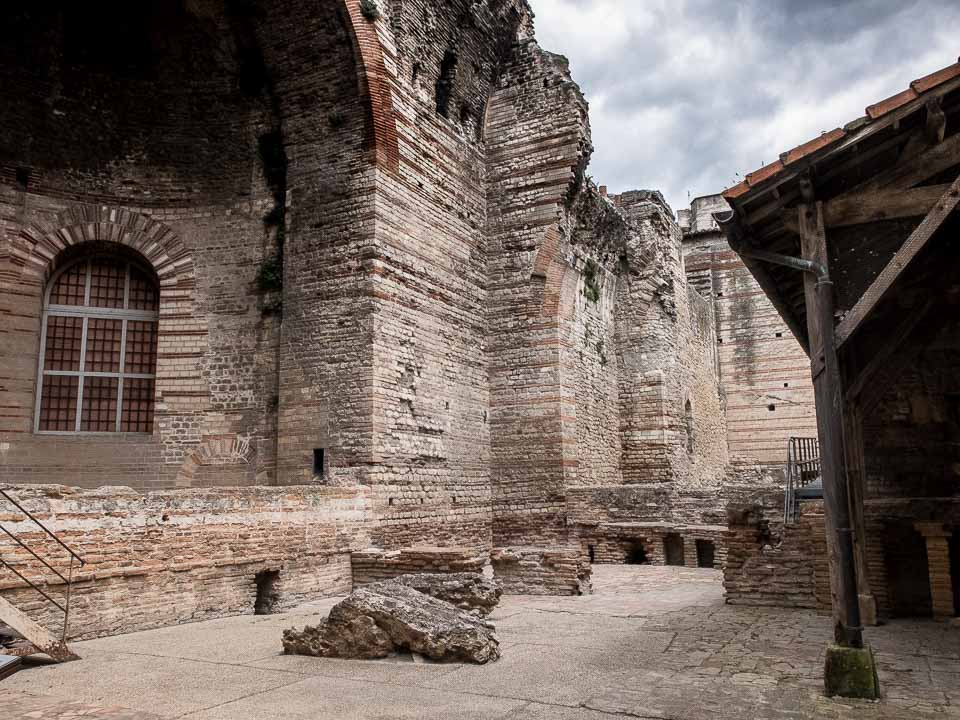
Arles, France is a lovely city for many reasons. Perhaps the best is that Vincent Van Gogh lived there for a year near the end of his career and painted some of his most famous works there. There's a self guided walking tour you can take through Arles which will take you to all the significant scenes of his life and paintings. And the really cool thing about that is there are placards all along the way that put a large reproduction of Vincent's work right in front of the scene he was painting.

I took that tour as part of our Viking river cruise up the Rhône River in southern France, and believe me, it's worth the minimal shoe leather.
But being the Roman history nerd that I am, I spent as much or more time staring at the impressive Roman ruins in Arles. There are lots of them, and they're well preserved and even, in the case of the amphitheater and theater, still in use to provide entertainment to the people of Arles today. The amphitheater is used for, among other things, bullfights. And the theater is good for both plays and concerts.
The reason Arles has such elaborate arenas of entertainment is that it was an important city of Southern France–the area now called Provence because it was the Roman province of Gaul. It was originally settled by retired soldiers of the Roman legions, and became an even more important settlement when Arles sided with Julius Caesar in the 1st Century B.C. civil war against Pompey.

And since there were a lot of soldiers there, there was also the cult of Mithras, which is represented rather obliquely by the carving of the bulls on the façade. It was a very macho cult, that obviously had a lot of affinity for soldiers. Although its rites were reserved for men, there was quite a scene of one of their rituals in the HBO series Rome that will give you an idea of its perceived power.

The importance of Arles as a Roman city is also evident by the size of the public baths, which were built by the emperor Constantine in the 4th Century A.D. Although only about a quarter of the orignial footprint of the baths remains, there's enough there to give a very good idea of their size, and there is also some of the original mechanism visible that will give you an idea of how the water and floors were heated. The Romans were incredible engineers, especially with the project had anything to do with water.
Arles, because of its historical importance and Roman ruins, is a Unesco World Heritage site.
Up Your Travel Skills
Looking to book your next trip? Use these resources that are tried and tested by us. First, to get our best travel tips, sign up for our email newsletter. Then, be sure to start your reading with our Resources Page where we highlight all the great travel companies and products that we trust. Travel Accessories: Check out our list of all the accessories we carry to make getting there and being there a lot easier. Credit Cards: See our detailed post on how to choose the right travel rewards credit card for you. Flights: Start finding the very best flight deals by subscribing to Thrifty Traveler. Book your Hotel: Find the best prices on hotels with Booking.com. See all of the gear and books we like in one place on our Amazon shop.Got a comment on this post? Join the conversation on Facebook, Instagram, or Threads and share your thoughts!

